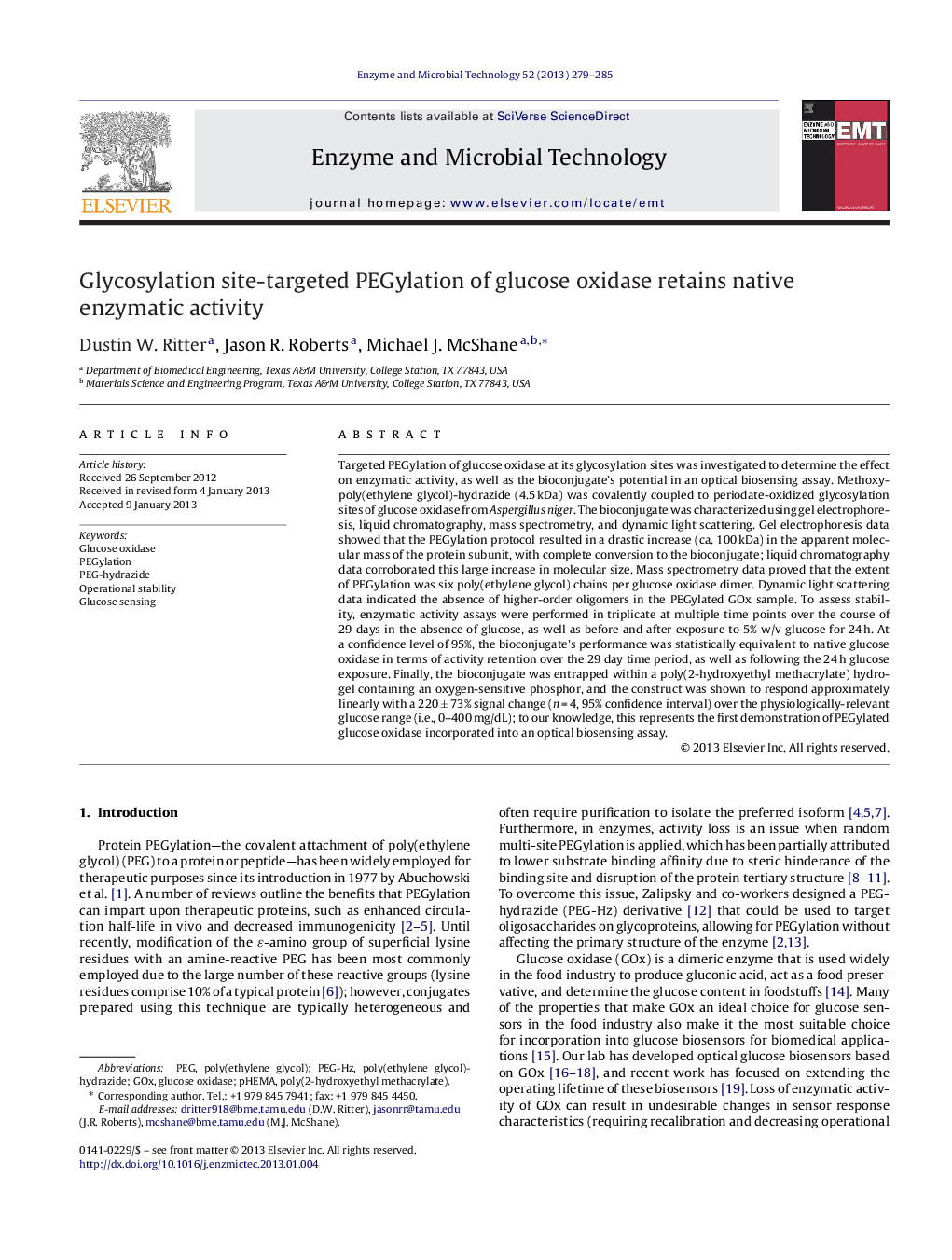| Article ID | Journal | Published Year | Pages | File Type |
|---|---|---|---|---|
| 17373 | Enzyme and Microbial Technology | 2013 | 7 Pages |
Targeted PEGylation of glucose oxidase at its glycosylation sites was investigated to determine the effect on enzymatic activity, as well as the bioconjugate's potential in an optical biosensing assay. Methoxy-poly(ethylene glycol)-hydrazide (4.5 kDa) was covalently coupled to periodate-oxidized glycosylation sites of glucose oxidase from Aspergillus niger. The bioconjugate was characterized using gel electrophoresis, liquid chromatography, mass spectrometry, and dynamic light scattering. Gel electrophoresis data showed that the PEGylation protocol resulted in a drastic increase (ca. 100 kDa) in the apparent molecular mass of the protein subunit, with complete conversion to the bioconjugate; liquid chromatography data corroborated this large increase in molecular size. Mass spectrometry data proved that the extent of PEGylation was six poly(ethylene glycol) chains per glucose oxidase dimer. Dynamic light scattering data indicated the absence of higher-order oligomers in the PEGylated GOx sample. To assess stability, enzymatic activity assays were performed in triplicate at multiple time points over the course of 29 days in the absence of glucose, as well as before and after exposure to 5% w/v glucose for 24 h. At a confidence level of 95%, the bioconjugate's performance was statistically equivalent to native glucose oxidase in terms of activity retention over the 29 day time period, as well as following the 24 h glucose exposure. Finally, the bioconjugate was entrapped within a poly(2-hydroxyethyl methacrylate) hydrogel containing an oxygen-sensitive phosphor, and the construct was shown to respond approximately linearly with a 220 ± 73% signal change (n = 4, 95% confidence interval) over the physiologically-relevant glucose range (i.e., 0–400 mg/dL); to our knowledge, this represents the first demonstration of PEGylated glucose oxidase incorporated into an optical biosensing assay.
Graphical abstractFigure optionsDownload full-size imageDownload as PowerPoint slideHighlights► Glucose oxidase from Aspergillus niger was PEGylated at its glycosylation sites. ► Mass spectrometry proved six polyethylene glycol chains per glucose oxidase dimer. ► Enzymatic activity assayed in the absence (29 days) and presence (24 h) of glucose. ► Bioconjugate's performance was statistically equivalent to native glucose oxidase. ► Bionconjugate incorporated into optical biosensor demonstrated linear response.
